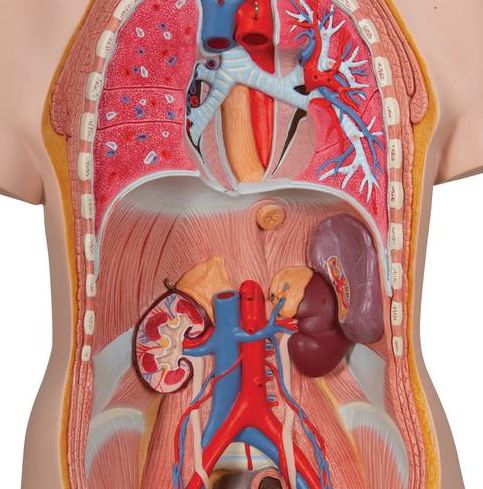قراءة لمدة 1 دقيقة Panderichthys

Panderichthys is a genus of extinct sarcopterygian (lobe-finned fish).
It lived in the late Devonian period, about 380 mya.
Possible tetrapod tracks dating back to before the appearance of "Panderichthys" in the fossil record were found.
This suggests that "Panderichthys" is not a direct ancestor of tetrapods.
It shows the traits which evolved during the fish-tetrapod evolution.
Decreased oxygen in the atmosphere would have caused the oxygen concentrations in water to decrease.
This would have caused any aquatic animal which could breathe air to have an advantage, and be more likely to thrive.
In addition to its ability to swim in water, "Panderichthys" could also breathe air.
Its strong pectoral fins might allow it to prop up its head in shallow water and take a breath.
Description.
"Panderichthys" is a 1.
5–2 m (4 ft 11 in6 ft 7 in) long fish with a large tetrapod-like head that is flattened, narrow at the snout and wide in the back.
In January 2010, "Nature" reported well-preserved and "securely dated" tetrapod tracks from Polish marine tidal flat sediments approximately 397 million years old.
These fossil tracks suggest that a group of two meter long tetrapods lived in the fully marine intertidal or lagoonal areas on the south coast of Laurussia.
This implies that "Panderichthys" is not a transitional fossil and represents its own adaptive morphology.
Therefore, "Panderichthys" can only be a "late-surviving relic", showing traits that evolved during the transition from fish-like creatures to tetrapods, but whose date does not reflect that transition.
The tracks "force a radical reassessment of the timing, ecology and environmental setting of the fish–tetrapod transition, as well as the completeness of the body fossil record".
The humerus.
One of the features of "Panderichthys" is its humerus.
Due to a complex process, early tetrapods have an L-shaped humerus.
Another unique feature is that the humeral ridge doesn't go into the entepicondyle.
Respiration.
"Panderichthys" could breathe air.
The opercular series in "Panderichthys" was shorter than in other species of osteolepiforms.













































